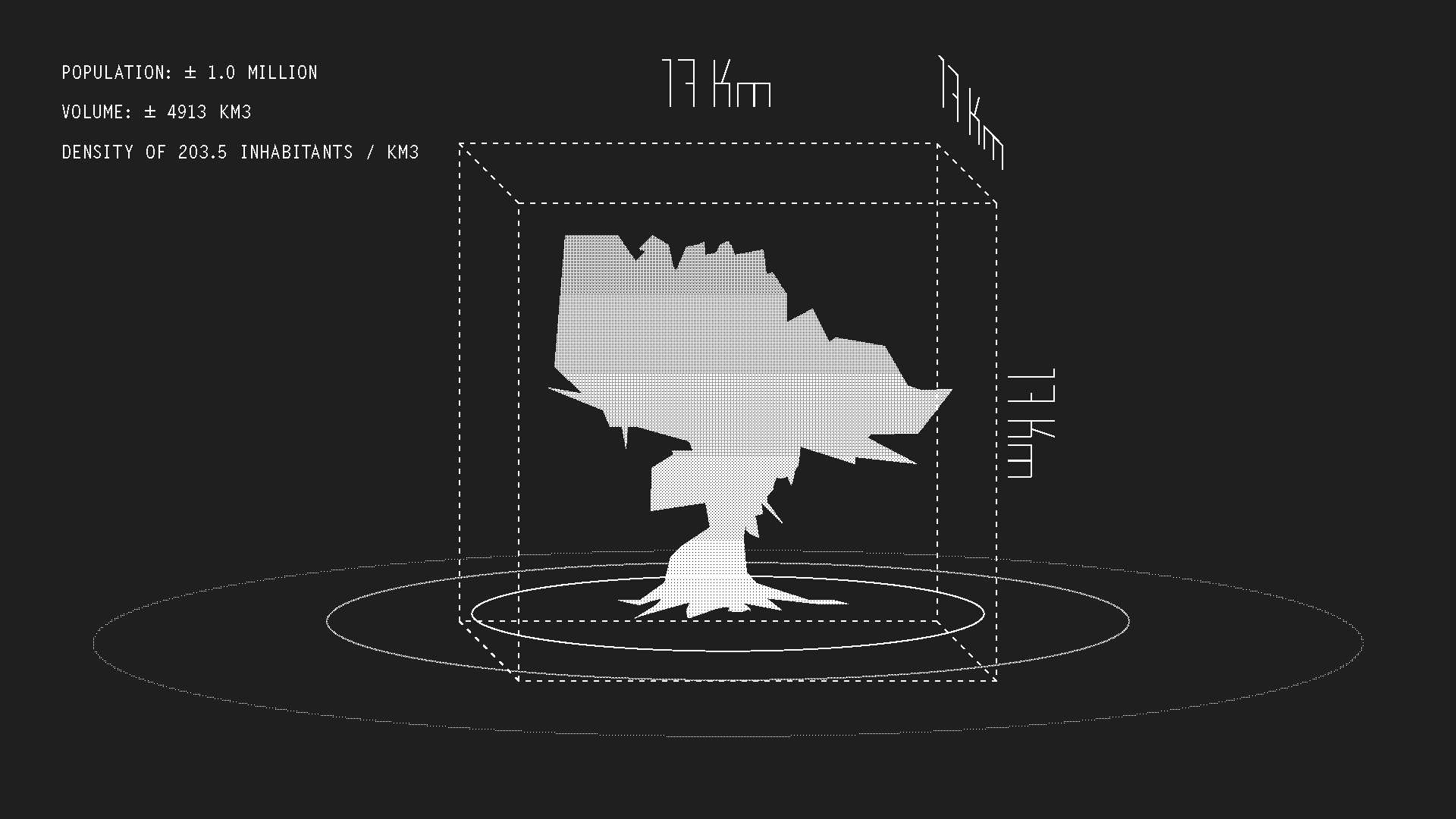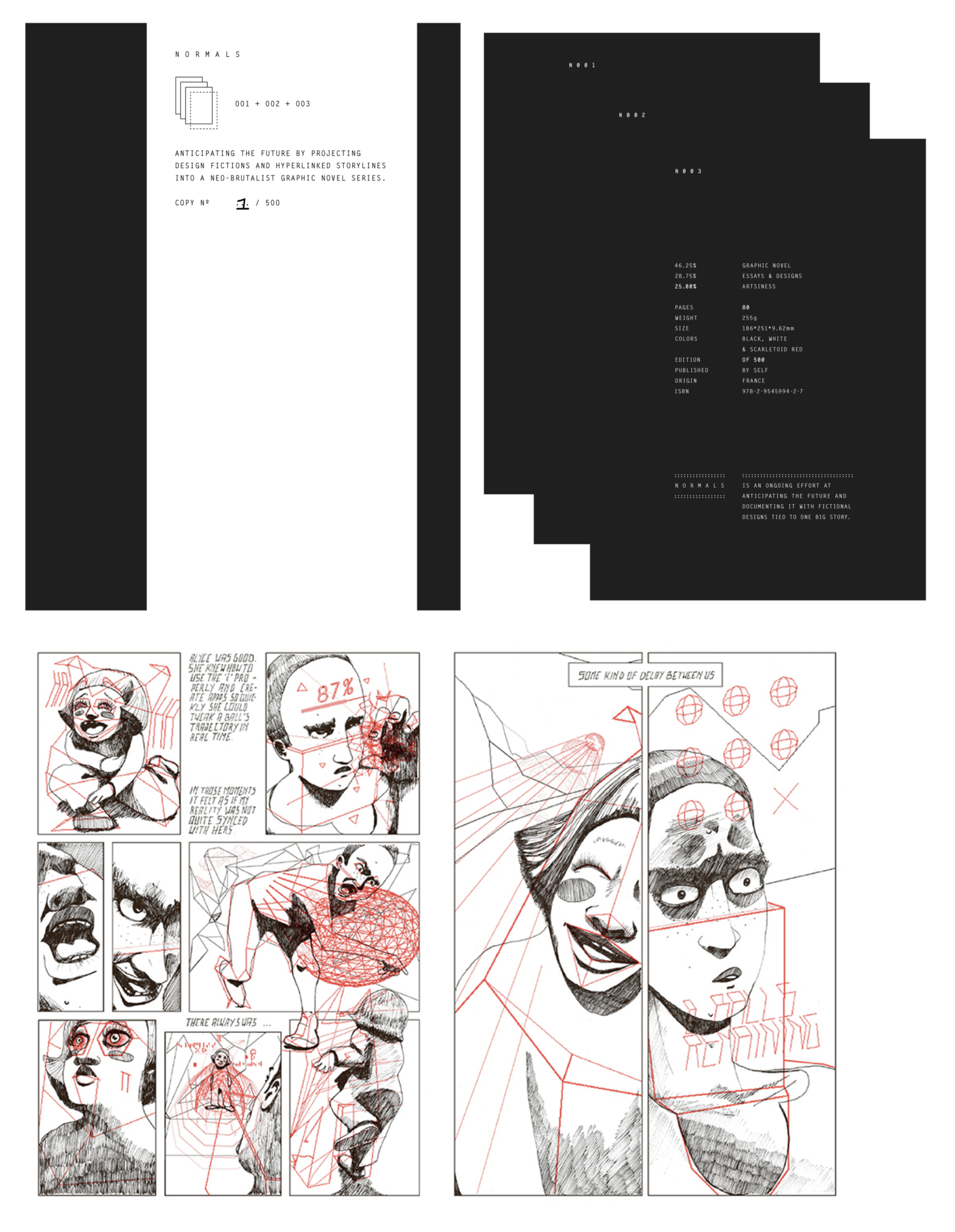The Culture is a fictional city and setting to our work in N 1 2 3. Born out of a policy to reduce resource consumption, people have been incentivized by a progressive form of basic income into clustering up, and building on top of each other so as to minimize their footprint on the land and let it heal away from human population. And so, the city expanded vertically through additive strata of printed geopolymer.
By the roots lies a patchwork of fields, pools, quarries, and farms. All mathematically subdivided — from vital to less vital — in order to optimize distances for resources to be carried over by agricultural drones. Resources then go upward in a pre-digested and carefully curated form along a network of arteries doubling as magnetic roads. The inhabitants of the culture — or 'frenz' — indeed not only get water from their taps, but also materials to feed and build. They occupy optimal spaces, move freely, and aren't too bothered by personal property because they can re-print it all.
But this free-for-all automated utopia is the surface of it all. When it comes down to individuals, their belief systems, the culture is a festering pool of curiosities and digital superstitions, desirable to some, distressing to others.



'Culture Generator' App
An application to generate 'cultures' based on a set of 15 parameters:
- Every rule has a random % of variation
- Flat, horizontal floors please!
- Human scale
- Some % of people want to be above others
- Tree-like Expansion and aging
- Reconfiguration
- Optimal routing of supplies
- Variable % of 'Phallomorphism'
- Some Like the Sun
- Some Like Isolation
- People Follow Branches
- Demographic Maximum
- Variable Speed of Urban Development
- Forces of Nature
- Proportional Size of Agricultural Crops





